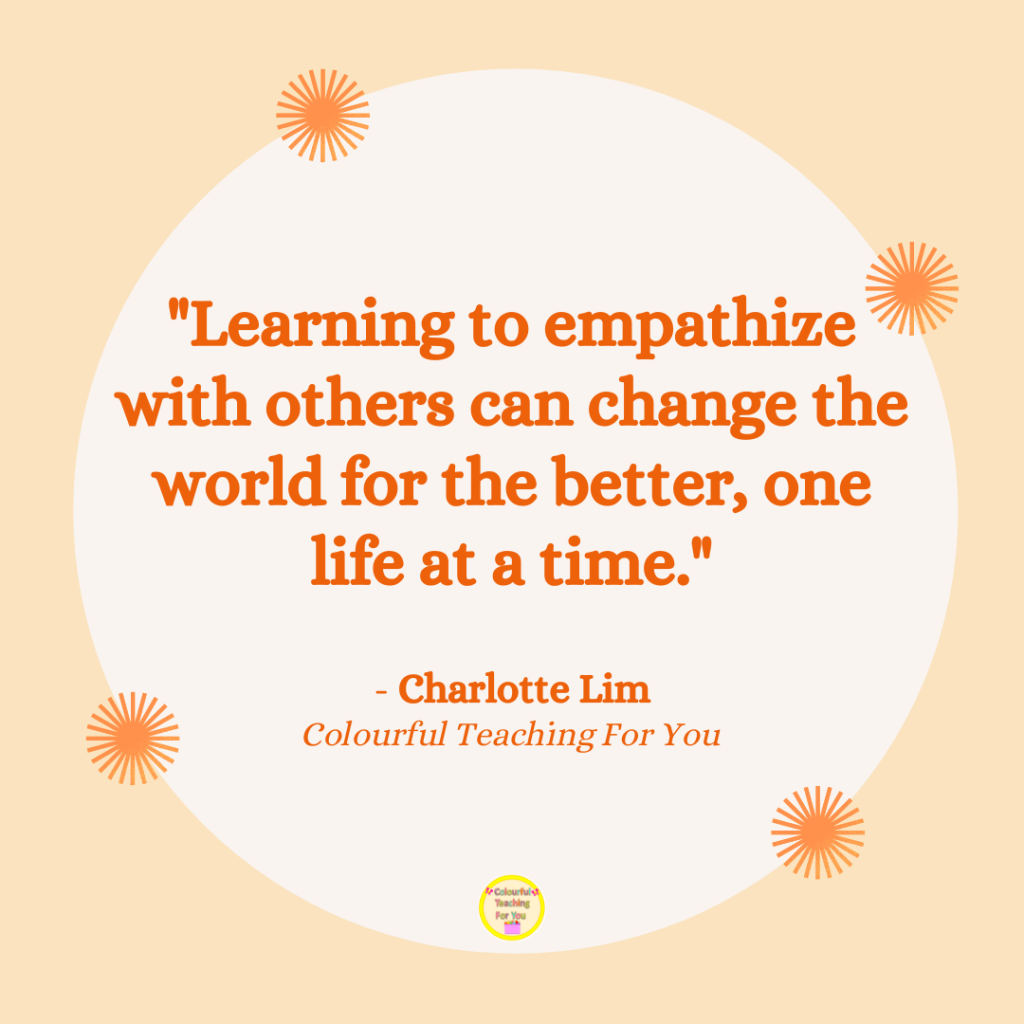
Today we’re going to talk about three ways of developing and teaching empathy through children’s literature.
Empathy allows children to imagine how others are feeling in different circumstances so that they can respond with care. It’s a complex skill that enables them to realize that other people have feelings that are different from their own.
This is an important lesson to teach our children because it helps prevent a variety of problems such as bullying, racism, mental health issues, and weak moral reasoning as they’re better able to understand each other.

The following strategies will help develop your students’ literacy, artistic, social, emotional, and equity skills with minimal prep. These strategies should be used multiple times as empathy takes a while to cultivate but it’s worth the effort.
Actionable Steps:
#1. Culture and Experience
Choose a book that’s culturally appropriate. That way, not only will more children feel connected to it but you’ll also expose them to different cultures and experiences. When students interact with the literature on this level, their understanding of the world broadens and their ability to accept and understand each other deepens.
#2. Perspective Empathy Mapping
Have children either chose an emotion or choose one for them from the book, and have them brainstorm what they would say, think or do if they were actually feeling it. They can also pretend that a friend is going through that emotion. This allows children to engage deeply with the literature while learning more about different people’s feelings.
#3. Dramatize The Feelings
For younger children, use puppets and for older ones, have them physically engage in the activity. Give your children scenarios or the feelings that were mentioned in step number 2, and have them act it out. Let your students practice and if they’re comfortable, they can share it with the class or in a small group setting. You can then lead a discussion about different feelings and perspectives.
Recap:
Let’s recap really quickly. Today, we looked at the following:
- The importance of developing and teaching empathy through children’s literature.
- Three ways to do it: Culture and Experience, Perspective Empathy Mapping, and Dramatize The Feelings.
Additional Thoughts:
In the comments below, I’d love to hear from you. Please answer the question in the following image:

If in the mean time, if you’re feeling stressed out, overwhelmed and burnout, then I encourage you to check out the following:
Next Steps:
If you’d like additional resources for your classroom here are the three ways you can access them: 1) Free Resource Library; 2) At my store; 3) The Colourful Teaching Club.
If you found this video beneficial, would you do me a favor? Share this with your family, your friends, your loved ones, your co-workers or someone who you think could benefit from this. Thank you!
I’ll see you next Friday at 5:30pm PST.
Until I see you next time, remember to create, experience & teach from the heart.
Take care,
Charlotte

